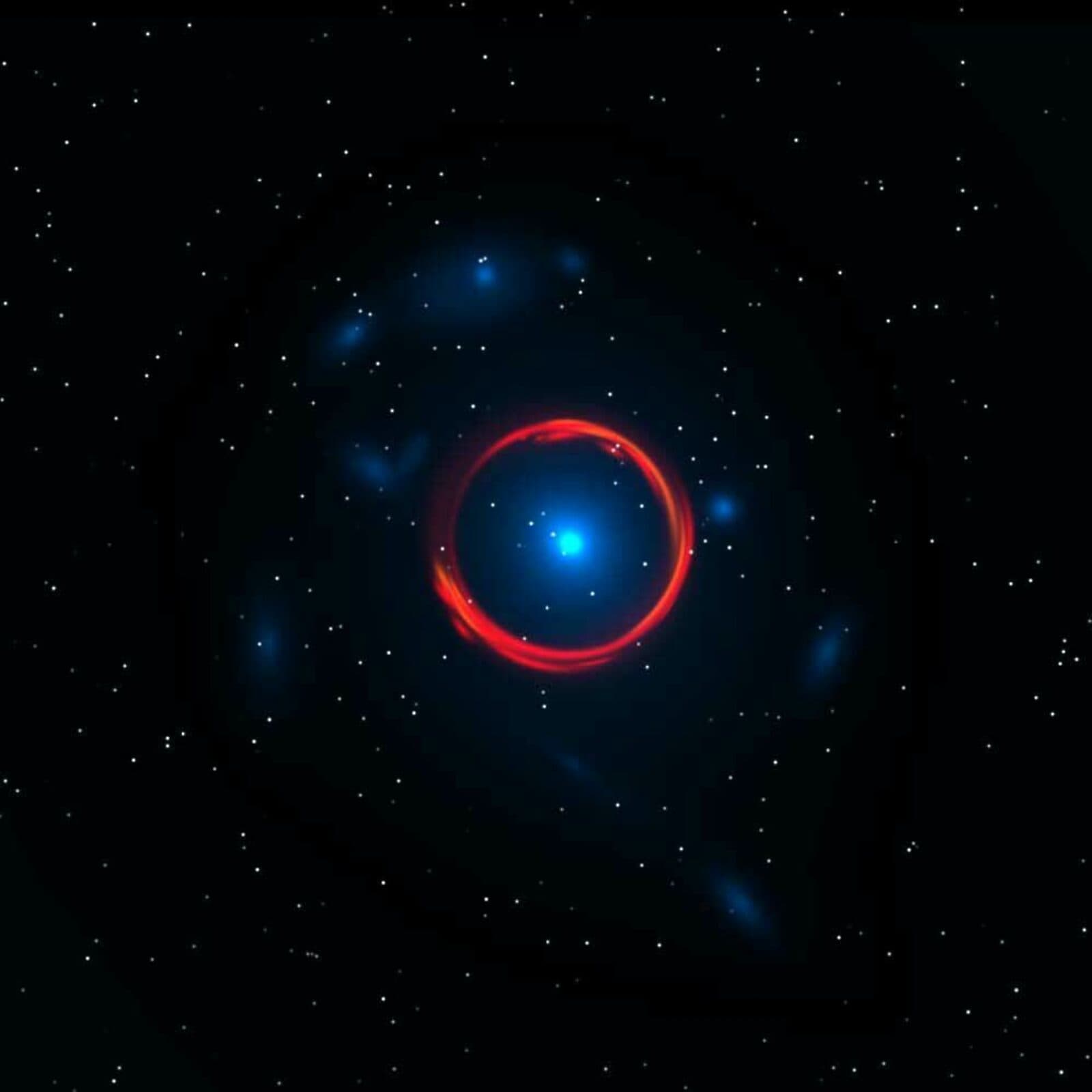Spotlight Live: Starbursts in the Early Universe
by Bruce Lieberman

The Author
The Researchers
THE MILKY WAY TODAY may fire up one new star every year, but billions of years ago, a subset of galaxies in the relatively young universe were producing new stars at a rate of 1,000 per year. Now, a multi-national team of astronomers has found that these distant, dusty galaxies were churning out stars much earlier than once believed – as early as one billion years after the Big Bang, nearly 13 billion years ago.
Measuring just how far away these galaxies are, and examining the rapid star formation going on inside them, was no trivial feat. Armed with a catalog of galaxies discovered by the South Pole Telescope (SPT), the astronomers used some fortuitous natural phenomena and the great resolving power of the Atacama Large Millimeter/submillimeter Array, or ALMA – an array of radio antennas situated on a high plateau in the Atacama Desert of Northern Chile – to learn about some of the most distant star-forming galaxies.
On March 29, science writer Bruce Lieberman asked your questions about the starbursts and the early universe with members of the research team: John E. Carlstrom, Dan P. Marrone and Joaquin D. Vieira.

About the Participants
- JOHN E. CARLSTROM is Subrahmanyan Chandrasekhar Distinguished Service Professor in the Departments of Astronomy and Astrophysics as well as Physics at the University of Chicago, and Deputy Director of the UChicago’s Kavli Institute for Cosmological Physics (KICP). Prof. Carlstrom is an observational cosmologist who studies the Cosmic Microwave Background (CMB). He is also leader of the 10-meter South Pole Telescope project, which recently completed a survey of 2,500 square degrees of the sky, and is now conducting a survey of the polarization of the CMB.
- DAN P. MARRONE is Assistant Professor in the Department of Astronomy at the University of Arizona. Prof. Marrone is interested in galaxy clusters, galaxy formation in the early universe, and the physics of the supermassive black hole in our galaxy, Sagittarius A*.
- JOAQUIN D. VIEIRA is Postdoctoral Scholar at the California Institute of Technology and member of Caltech’s Observational Cosmology Group. Dr. Vieira is interested in studying galaxy evolution at very high redshifts, the first stars and galaxies, and the evolution of large-scale structures in the universe. He is the leader of the group studying the galaxies discovered by the South Pole Telescope.
- BRUCE LIEBERMAN is a freelance journalist with more than 20 years of experience in the news business. He worked as a reporter at daily newspapers for many years before becoming an independent writer and editor in 2010. For The Kavli Foundation, Bruce has interviewed researchers about galaxy clusters, dark matter and dark energy, string theory, the emergence of the first stars and galaxies, exoplanets and other subjects. He has also written for Scientific American, Smithsonian Air & Space magazine, and Nature about a variety of science topics.
Your Questions
On Friday March 29, John E. Carlstrom, Dan P. Marrone and Joaquin D. Vieira answered these questions about starbursts and the early universe.
- How are these old galaxies fundamentally different from the galaxies we see today? (1:05)
- Why was it surprising to find stars forming at a high rate 1 billion years after the Big Bang? (2:00)
- How has the universe evolved over the ages? (4:40)
- How far back in time is the limit at which we can see the earliest galaxies? (6:20)
- Does the slowing of star formation mean that the universe is dying? (7:50)
- Can the Big Bang ever be understood? (9:10)
- Do we expect the universe to ever stop expanding? (10:00)
- How did you discover the starburst galaxies and how long did it take to discover them? (11:30)
- What are the differences between ALMA and the South Pole Telescope? (13:25)
- Are there any other places you would like to put telescopes, besides the South Pole or the Atacama Desert? (16:38)
- What is it like to work at the South Pole? (17:20)
- When do you think the first star was born and what did it need to be born? (20:25)
- Will we ever see the light from the first star? (22:28)
- Would it be possible for these early stars to have planets that harbored life? (23:55)
- In the early universe, do neutrinos interact with photons at all? (25:15)
- How can we see galaxies that are so close to the Big Bang? (26:25)
- Is there a center to the universe and can we see it? (29:20)
- Are we still discovering new types of galaxies and stars? (30:30)
- When ALMA is finished, what will that mean for our exploration of the sky? (32:15)